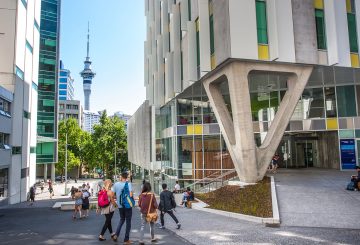국제적인 명성을 얻고 있는 건축가이자 연구자인 앤서니 회테 (Anthony Hoete) 교수와 그의 팀은 유서 깊은 베이 오브 플렌티 화레누이를 재건하는 데 사용할 고대 마오리 건축 기술에 대한 본격적인 내진 테스트를 이번 달에 실시할 예정이다.
오포티키 인근의 화레누이는 네이피어 지진 이후 그 자리를 지키지 못하고 있으며, 호에테가 이끄는 오클랜드 대학교 연구팀은 미미로 (mīmiro) 라는 멸종 위기에 처한 건축 지식을 바탕으로 실물 크기의 목재 구조물 프로토타입을 건설할 예정이다.
이번 주 팀은 Toka Tū Ake EQC의 지원 덕분에 프로토타입의 내진 복원력을 테스트할 예정입니다.
Hoete와 마오리 건축 연구원인 제레미 트레드웰 (Jeremy Treadwell) 박사는 부품을 볼트로 연결하는 대신 맞물리는 압축 조인트를 사용하여 목재 포털을 설계하고 제작했습니다.동시에 로프는 텐트처럼 구조물을 땅으로 끌어 당깁니다.
테스트 단계에서 그의 팀은 공과대학과 협력하여 Jason Ingham 교수의 지프에서 윈치를 사용하여 수직 포털을 옆으로 당길 예정입니다.수평 강도를 테스트하고 물 무게를 사용하여 수직 강도를 테스트합니다.
이 프로젝트는 토카 투 아케 EQC (지진 위원회) 로부터 새로운 화레누이와 지역 사회의 내진 복원력을 강화하기 위한 자금 지원을 받았습니다.
Hoete는 미미로의 기원이 그의 조상들이 태평양을 횡단할 때 사용하던 배와 힘찬 돛으로 거슬러 올라간다고 말합니다.
이위의 조상을 나타내는 가장 중요한 조각품들은 잔해에서 구조되어 마라에에 있는 창고에 90년 동안 훌륭하게 보관되었습니다.
크레딧: sunlive.co.nz



















































(1)-360x245.jpg)









